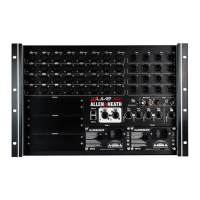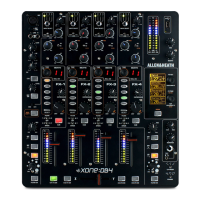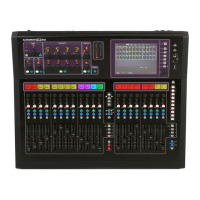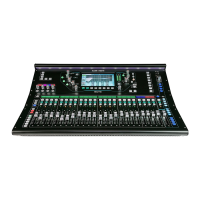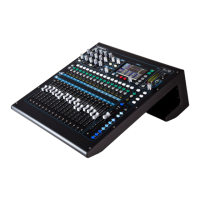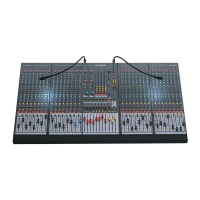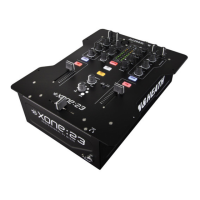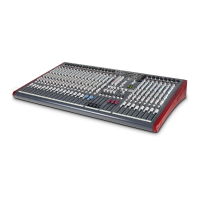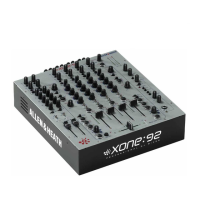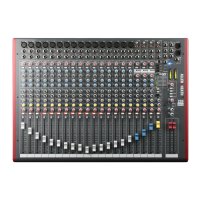Mixing audio signals in the digital domain provides
with its powerful processing tools,
programmability and sonic clarity well beyond the capability of traditional analog mixing.
However, no additional expertise or equipment is required for operation. The audio signals
enter and leave in standard analog format, and the usual familiar controls are presented.
The input sources are matched to the operating level of the mixer through high grade pre-amps,
then converted to digital signals using A/D (analog to digital) converters. In the digital domain
audio signals are represented as binary numbers which are mixed and processed by the DSP
(digital signal processor) by applying mathematical operations known as algorithms. No matter
how complex these algorithms they are always accurate and do not suffer the usual noise,
distortion and crosstalk problems associated with analog mixing. An algorithm is the digital
equivalent of an electronic circuit. The circuits in analog mixers can be complex, take up
considerable space and are not easily modified once built. Digital algorithms are stored as data
in computer memory and can be easily adapted in software. A built in computer reads the
changes you make to the controls and sends instructions to the DSP accordingly. The control
settings can be stored as digital data in memory for recall later. Once processed the signals are
converted back to analog audio using D/A (digital to analog) converters. The computer
operations are determined by a software program which is loaded in memory. The
includes an RS232 serial computer port which allows for future upgrades to this software as
well as the archiving of user data.
The
retains an easy-to-use control panel with familiar controls. Multi level menus are
avoided. Important performance controls such as channel gain, faders, mute switches, amplifier
levels and headphone monitoring are instantly accessible. Access to the auxiliary mixes and
signal processing such as EQ, dynamics and effects is by a single key press which assigns the
function of 10 rotary controls and associated LCD display. This is known as the ‘soft strip’ as
its function is determined by the row of select keys beneath. For example, it can become a
channel EQ with simultaneous control of all four bands, or it can be used to set up the foldback
mix with all channel sends presented at the same time. A cursor keypad provides menu control
and additional editing functions including copy, paste, undo and reset.
The
soft strip keeps the layout simple and logical with easily accessed controls. The keys
are shaped and grouped according to function and together with the LCD display are backlit for
operation in low lighting conditions. The display provides instant visual feedback of the
control settings, EQ response curve, setup menus and memory names using large text easily
read from the performance position.
The
can be put into standby mode when leaving the mixer unattended or reconfiguring
equipment. Pressing the front panel standby switch disconnects the loudspeakers, mutes all
outputs and disables the controls.
The channel signals are mixed and routed to the outputs using the faders and level controls.
Signals can be panned between left and right in the main LR mix to create a stereo image. The
balance and level of the FB monitor and AUX mixes is independently controlled. Each input
and output has its own channel strip with 100mm fader, mute switch to turn the signal on or off,
PFL switch so that the signal can be independently monitored using headphones, and peak
indicator to warn if the signal level is too high. The fader always takes control of the channel
signal level and is not automated. However, a trim function is provided so that level
differences between songs or scenes can be stored in memory if required. With the faders set at
normal ‘0’ position, recalling the memories adjusts the levels as programmed. For example,
this can be useful when backing tracks have been recorded at different levels and would
otherwise require manual adjustment during performance.

